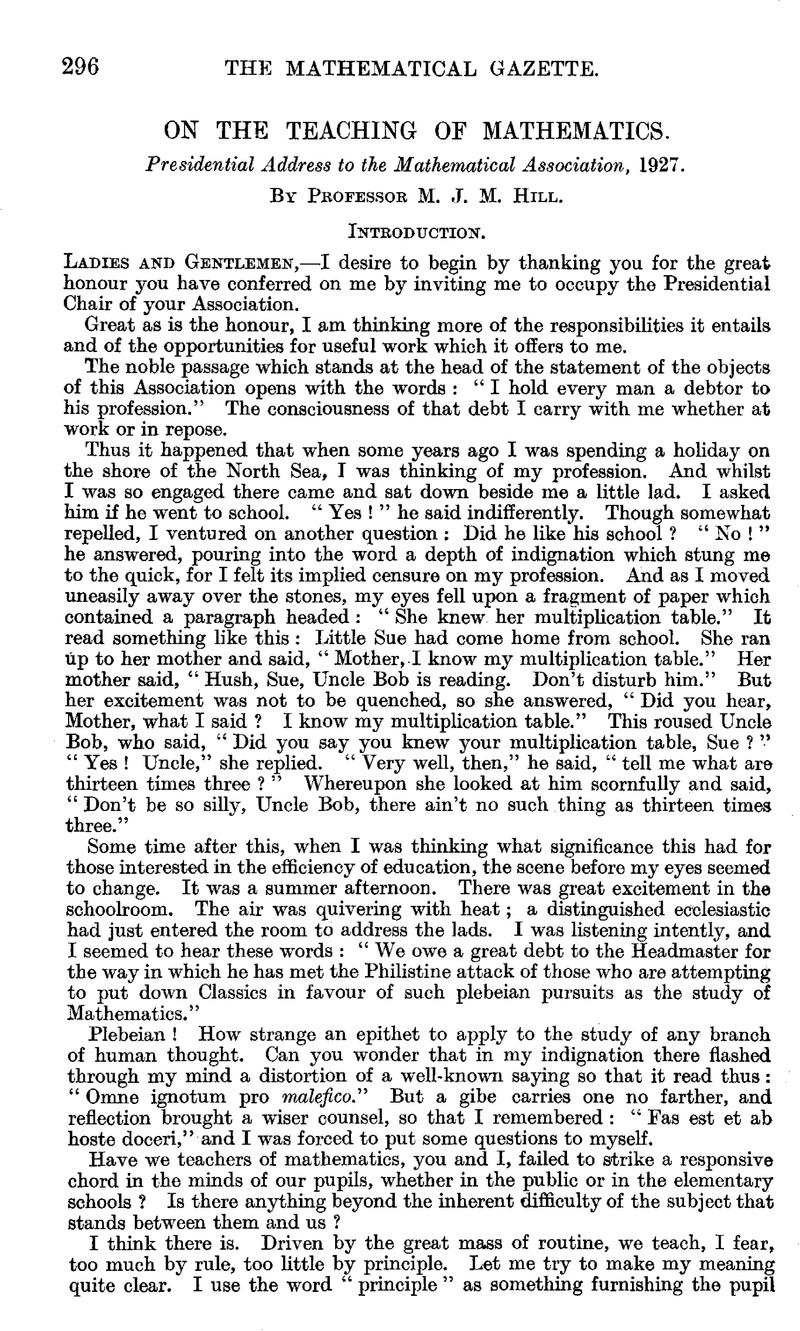No CrossRef data available.
Article contents
On the Teaching of Mathematics
Published online by Cambridge University Press: 03 November 2016
Abstract

- Type
- Other
- Information
- Copyright
- Copyright © Mathematical Association 1927
References
page 298 note * But not the foreign ones.
page 301 note * Iuse the words ‘multiply’ and ‘times’ in an extended sense for the sake of brevity. I should not do this in actual teaching without explanation.
page 303 note * Saccheri’s work is divided into two books, the first dealing with parallels, the second with proportion. An English translation of the first book, by Q. B. Halsted, with a reprint of the Latin original, was published in 1920 by the Open Court Company.—[Ed.]
page 303 note † Although Saccheri’s proof that the existence of two non-congruent similar triangles involves the truth of the Hypothesis of the Eight Angle is not valid, yet valid proofs exist. But it is to be noted that the deduction of Euclid's Postulate of Parallels from Saccheri’s Hypothesis of the Right Angle requires assumptions not needed in the Theory given below. These assumptions are: (1) The Postulate that all right angles are equal; (2) The Propositions or Postulates involved in the theory of the congruence of areas:
page 304 note * Wallis stated his Postulate thns: ‘To every figure there exists a similar figure of arbitrary magnitude.’ Although in the form to be used there is no reference to similarity or to the idea of ratio which similarity suggests, it will be convenient to refer to the modified Postulate as Wallis’s.
page 305 note * Similar reasoning holds if FBC, GCB be taken as alternate angles.
page 306 note * Similar reasoning holds if the exterior and corresponding interior angles be chosen in any of the other three possible ways.
page 306 note † The proof of this case was, I believe, first given by Prof. T. P. Nunn, in the Gazette, vol. xi p. 71 (May, 1922).




